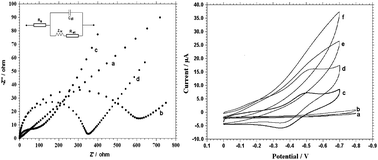Novel nanomaterials for biosensor applications represent a rapidly progressing field of nanotechnology. An exploration of functionalized multi-walled carbon nanotubes (MWNTs) as a platform for amperometric determination of glucose employing the enzymes glucose oxidase (GOx) and horseradish peroxidase (HRP), which were immobilized with neutral red (NR) functionalized MWNTs is presented. The fabrication and analytical characterization of the glucose biosensor for the measurement of low concentration of glucose is described. Owing to the electrocatalytic effect of carbon nanotubes, the measurement of faradic responses resulting from enzymatic reactions has been realized at low potential with acceptable sensitivity. Experimental parameters affecting the sensitivity of biosensors, e.g., applied potential, pH, temperature etc., were optimized and potential interferences were examined. The response time for the glucose biosensor was very fast (within 2 seconds) and it showed good storage stability at 4 °C over a 5-month period. The proposed biosensor exhibited short response time, high sensitivity, easy operation, and simple sensor assembly. The biosensor was successfully applied to the determination of glucose in human blood samples and acceptable results were obtained.

You have access to this article
 Please wait while we load your content...
Something went wrong. Try again?
Please wait while we load your content...
Something went wrong. Try again?


 Please wait while we load your content...
Please wait while we load your content...